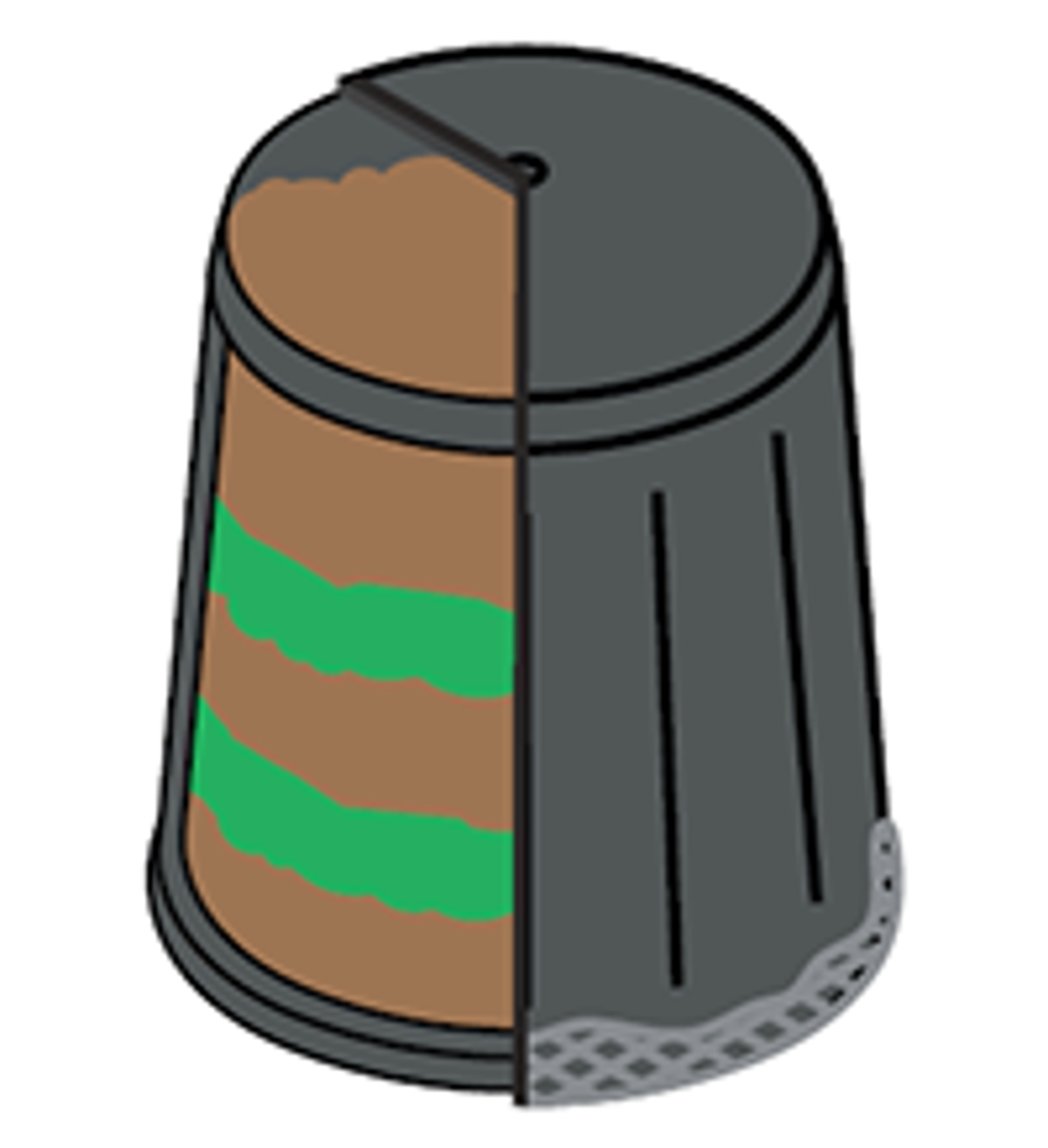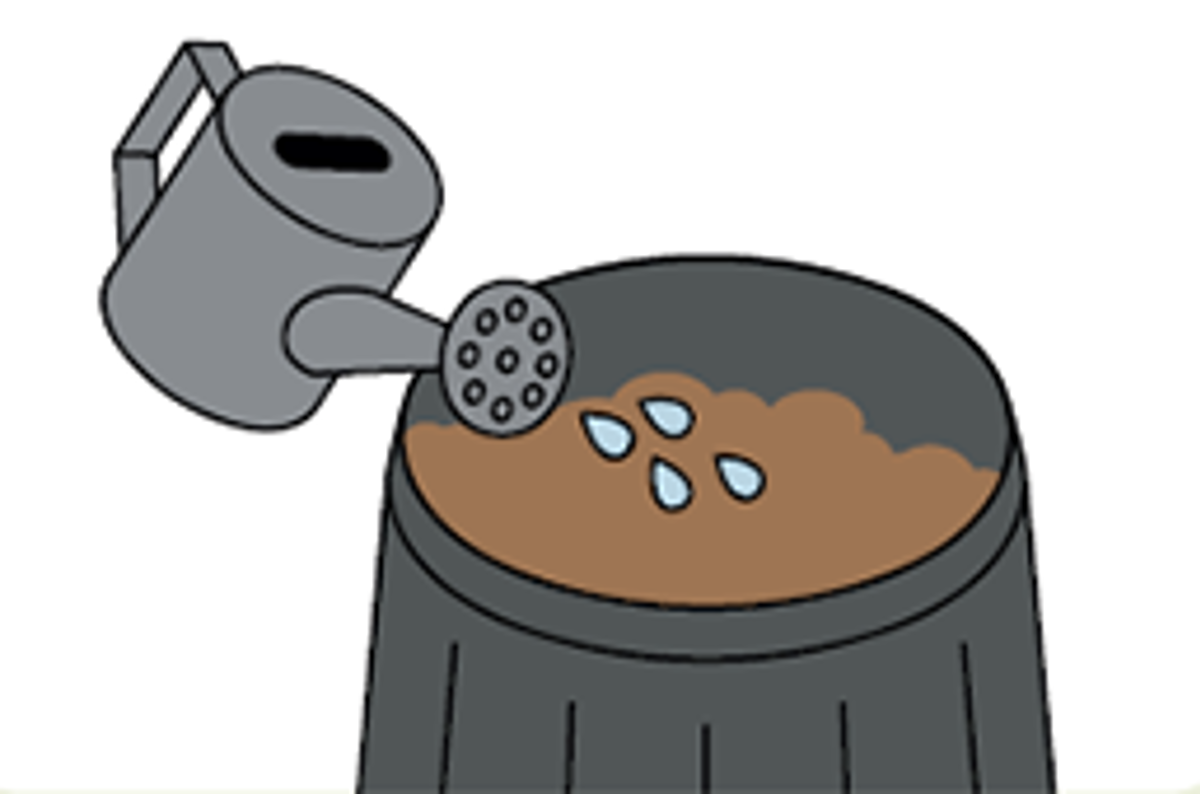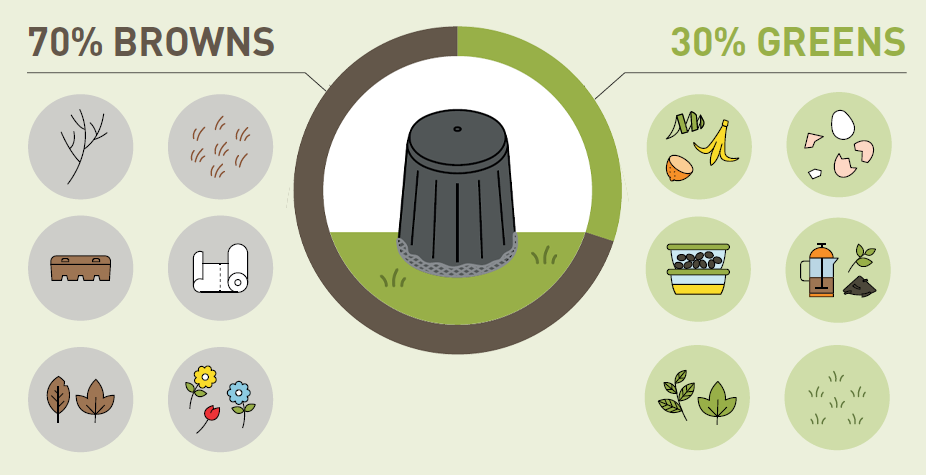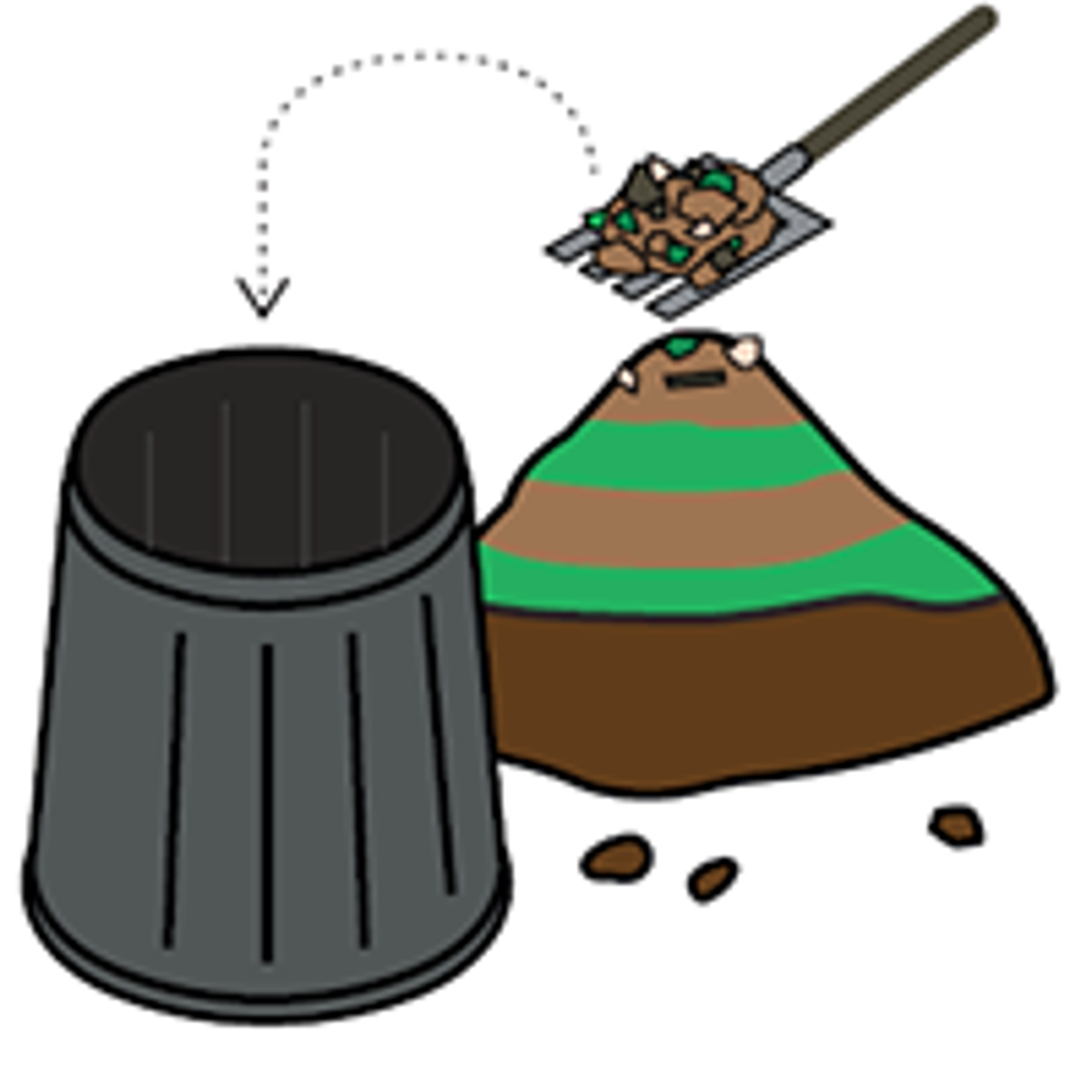Compost bins
Traditional home composting, but it can be a little different to what you've always thought. Find out how to create a healthy, usable compost at your place.
Getting started
Choose a sunny spot to place your compost bin. Position directly on the earth so soil life can enter. Layer twigs at the base so air can flow freely inside.
Compost recipe
It's important to get the balance of greens and browns right. When you add food waste/Bokashi solids or lawn clippings to your compost, try to alternate with browns/dry materials. Otherwise your compost pile may go anaerobic, and become a smelly sludge. Think of your compost as a sandwich, where browns are the bread and greens are the filling.

Feeding your compost
Keep feeding your compost 30 percent greens and 70 percent browns. This will help build up heat to speed up the composting. Compost should be moist like a sponge; add water to the dry material, cover to trap moisture, and make sure there is plenty of air flow. Turning your compost will speed up the composting process, but isn’t essential.

 What to add
What to add
30 percent greens: anything soft, fresh, and nitrogen rich:
- chopped fruit and veggie scraps
- eggshells
- cooked veggie leftovers
- coffee grounds, tea leaves and tea bags
- fresh garden waste
- fresh grass clippings.
70 percent browns: anything brown, brittle and carbon rich:
- small twigs
- dried brown grass clippings
- cardboard and certified home compostable packaging
- paper towels
- dry leaves and garden waste
- indoor cut flowers.
What not to add
Noxious weeds, dog and cat faeces (manure from grass-eating animals is fine), oil and other liquids, cooked and/or processed foods (eg, bread, pasta and meat – unless it has been treated with Bokashi first).
Harvest time
Compost is ready to harvest when it becomes dark and crumbly and you cannot identify the original materials in it. This normally takes 6–9 months. Harvest the bottom third of composted material by removing the bin. With a garden fork, take the top two-thirds of semi-composted material and place it back in the bin. This will leave a pile of good quality compost to spread over your garden.

Troubleshooting
Some common composting problems, and how to fix them.
| Problem | Solution |
| Not breaking down | Your compost is probably too dry. Mix it with a garden fork while adding water. |
| Smelly or slimy | Your compost is either too wet, lacking browns, or needs air. Mix it up and add some browns (scrunched up newspaper or torn cardboard work well). Add a sprinkle of garden lime. |
| Flies | Don’t add meat scraps or cooked food. Cover food with a thick layer of browns. |
| Rodents |
Don’t add meat, cooked or processed foods. Make sure your compost is hot by adding the right balance of browns and greens, water and air. If rodents persist you can rat-proof your bin:
OR stop adding food waste to your compost bin – use a Bokashi bin or worm farm instead (adding food waste that has been “pickled” by bokashi is fine). |
- Love Your Compost – Compost bins [PDF 490 KB]
